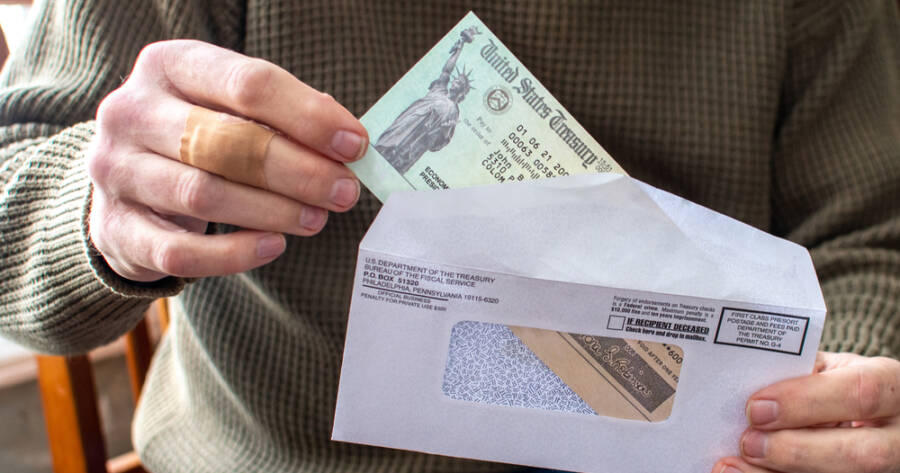Stimulus checks serve as government tools to support individuals and boost economies during crises. These direct payments provide financial relief and encourage spending, though eligibility varies. Understanding the mechanics and economic implications of these payments is crucial for anyone seeking this form of financial assistance.
What Are Stimulus Checks and How Do They Work?
Stimulus checks are direct payments made by the government to individuals, typically during times of economic distress, to stimulate consumer spending and boost the economy. Payments are typically distributed via paper checks or direct deposit. These checks are designed to increase consumer confidence by putting money directly into people’s hands, and encouraging spending on goods and services.
Not everyone qualifies for a stimulus check. Eligibility is generally based on income thresholds, tax filing status, and whether or not the individual is claimed as a dependent on someone else’s tax returns. For example, individuals making less than a certain income threshold are eligible for full payments, while those above the threshold may receive a reduced amount or no payment at all.
Examples of Stimulus Checks: Past and Present
Stimulus checks have been used at various points in U.S. history. For example, during the COVID-19 pandemic, the government issued multiple rounds of stimulus checks under the CARES Act and the American Rescue Plan. In the first round of payments in 2020, eligible individuals received $1,200, with an additional $500 for qualifying children. Subsequent rounds followed, offering varying amounts, with payments capped at income limits.
Another well-known example is the Economic Stimulus Act of 2008. In response to the financial crisis, the government sent out checks to individuals with qualifying income, with amounts ranging from $300 for individuals to $1,200 for married couples, with additional payments for qualifying children.
Economic Impact and Considerations of Stimulus Checks
The primary purpose of stimulus checks is to stimulate economic activity. When individuals receive these payments, they are likely to spend the funds, which helps boost demand for goods and services. This surge in consumer spending can help businesses stay afloat during economic downturns and support the overall recovery of the economy.
However, critics argue that stimulus checks may not always have the desired effect. Some studies suggest that people may use the funds to pay down debt or save rather than spend, which could limit the immediate impact on economic activity. Additionally, the increased government spending can lead to larger deficits, raising concerns about the long-term effects on the national budget.
Eligibility and Tax Implications of Stimulus Checks
Eligibility for stimulus checks typically hinges on income thresholds, tax filing status, and whether an individual is claimed as a dependent. For example, single taxpayers earning below a certain income level may be eligible for full payments, while higher-income individuals receive reduced amounts.
It’s important to note that stimulus checks are not considered taxable income. Instead, they are viewed as an advance on a tax refund, meaning they do not increase your tax liability. However, if your income changes significantly, or if you didn’t receive the full amount of the stimulus check, you may receive additional funds when filing your taxes, or owe money if you were overpaid.
Stimulus Checks vs. Tax Credits: What’s the Difference?
While both stimulus checks and tax credits are forms of government financial assistance, they differ in their purpose and implementation. Stimulus checks provide direct payments to individuals to stimulate spending and boost the economy, typically during periods of economic downturn. They are issued regardless of the individual’s tax liability.
On the other hand, tax credits are subtracted from the amount of taxes owed. For example, the Child Tax Credit allows qualifying individuals to reduce their tax bill. Unlike stimulus checks, tax credits don’t aim to spur immediate economic activity; instead, they provide longer-term financial relief for individuals and families.
Navigating Future Stimulus Programs and What to Expect
Given the unpredictable nature of economic crises, it’s essential to stay informed about any future stimulus programs. Each program may have its own eligibility criteria, payment amounts, and impact on the economy. Historically, stimulus checks have been part of broader fiscal policies aimed at addressing recessions or financial crises, but future programs could take different forms depending on the situation.
It’s crucial to understand both the short-term benefits and long-term economic implications of receiving stimulus checks. While they provide immediate relief, the overall effects on the national economy and future financial policies can affect individuals in ways that require thoughtful consideration and planning. Stay updated on new policies and make informed decisions to maximize the benefit from such programs.
Looking Ahead: Understanding the Bigger Picture of Stimulus Payments
Stimulus checks serve as an essential tool in providing relief during times of economic hardship, supporting both individuals and businesses. While they offer immediate financial relief, it’s important to consider the broader implications of such programs on the economy and personal finances. By staying informed about eligibility criteria and understanding the full scope of these payments, individuals can make the most of the support they receive while being mindful of the long-term economic impact.

